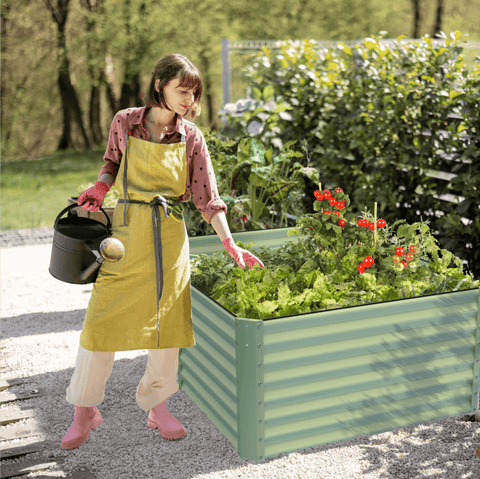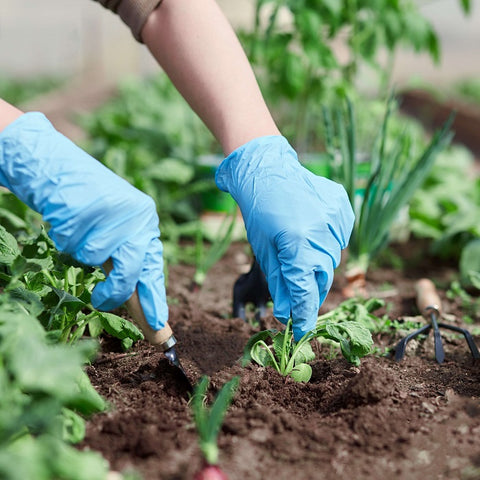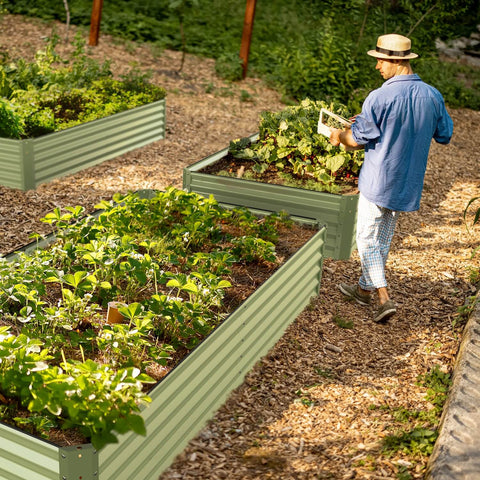Many people ask if they can use the seeds from the fruits and vegetables they buy. Can I keep my own vegetables for next planting?The following content also has some reference value for raised garden beds.
First of all, I can tell you clearly: Yes. But there are many links that need to be paid attention to, otherwise the germination rate will be very low or no germination.
General supermarket or market to buy fruits and vegetables, basically are not fully ripe when picked down. Matured only in transit or during storage.
Therefore, it is not recommended to plant seeds from melons and fruits bought in supermarkets or wet markets, as the success rate of germination is very low.
But when you grow your own food, it's almost entirely natural. There are certain steps that can be taken to preserve the seed and then used for the next sowing. If not done correctly, the germination rate of the seed will be affected.
 The specific steps of retaining seeds are as follows:
The specific steps of retaining seeds are as follows:
Step 1: Select the remaining fruit or plant
- Select the seeds from the healthiest plants that produce the most fruit throughout their growing cycle
- Choose large, plump fruit, preferably from the lower part of the plant.
- Let the fruit grow and ripen naturally (if the fruit is slightly ripe, it can be picked and eaten).
 Step 2: Clean the seeds thoroughly
Step 2: Clean the seeds thoroughly
The seeds of most fruits, such as tomatoes, cucumbers and strawberries, need to be carefully cleaned to prevent pulp or gelatinous residue from remaining on the surface of the seeds.
Step 3: Treat Seeds (Optional)
This process is equivalent to sterilizing the seeds, inactivating some of the pathogens contained in the seeds, helping to prevent some of the diseases and pests caused by the seeds in the future sowing, and also helping to prevent the seeds from going bad during storage.
Commonly used natural "sterilization" technologies include hot water treatment and fermentation treatment.
Hot water treatment: Put your seeds in water that has reached between 45 and 50 degrees Celsius and let them soak for 20 minutes, preferably at a constant temperature during this time. Fermentation treatment is a little bit complicated, here is too much to do, recommended to use hot water treatment method.
Step 4: Dry the seeds
 When you're sure the seeds are clean and, if needed, have been treated, the next step is to dry them.
When you're sure the seeds are clean and, if needed, have been treated, the next step is to dry them.
This step is probably the most important, as excessive water content in the seed tissue can lead to the development of mold or excessive consumption of seed nutrients during preservation, which can be fatal to the viability of the seed and also severely impair its germination rate.
The purpose of drying is to reduce the humidity inside the seed and increase its germination rate.
Note: Some seeds tend to stick together when they are drying, especially when they are drying at the beginning, such as tomato seeds, strawberry seeds and other small seeds. Turning or rubbing them back and forth from time to time will help separate them and allow them to dry well.
How long should it dry?
Some of you might ask how long do seeds need to dry? Unfortunately, there are too many variables to have a definite time.
For example, for smaller seeds (up to about 3mm), one week may be sufficient, while for larger seeds, at least two weeks should be required.
In some cases, this time may not be enough, as the temperature and humidity of the air, the methods used for drying and the characteristics of the seeds can have a significant impact.
It's hard to determine when, but you can crack open a seed by biting it or picking it by hand, as long as the inside isn't too wet.
Step 5: Save the seeds
Wrap it in paper and store it in a cool, dark, dry place, in a metal box if possible, or a glass jar with a lid.
Remarks:
- Be careful not to use plastic bags to wrap the seeds, as paper bags can absorb the remaining moisture, but plastic bags cannot.
- You can write the name of the seed on the paper bag along with the date it was packed. This will help you remember. It is best to use seeds left in the current year (the longer they are stored, the lower the germination rate, although the shelf life of seeds is about 2 years).









